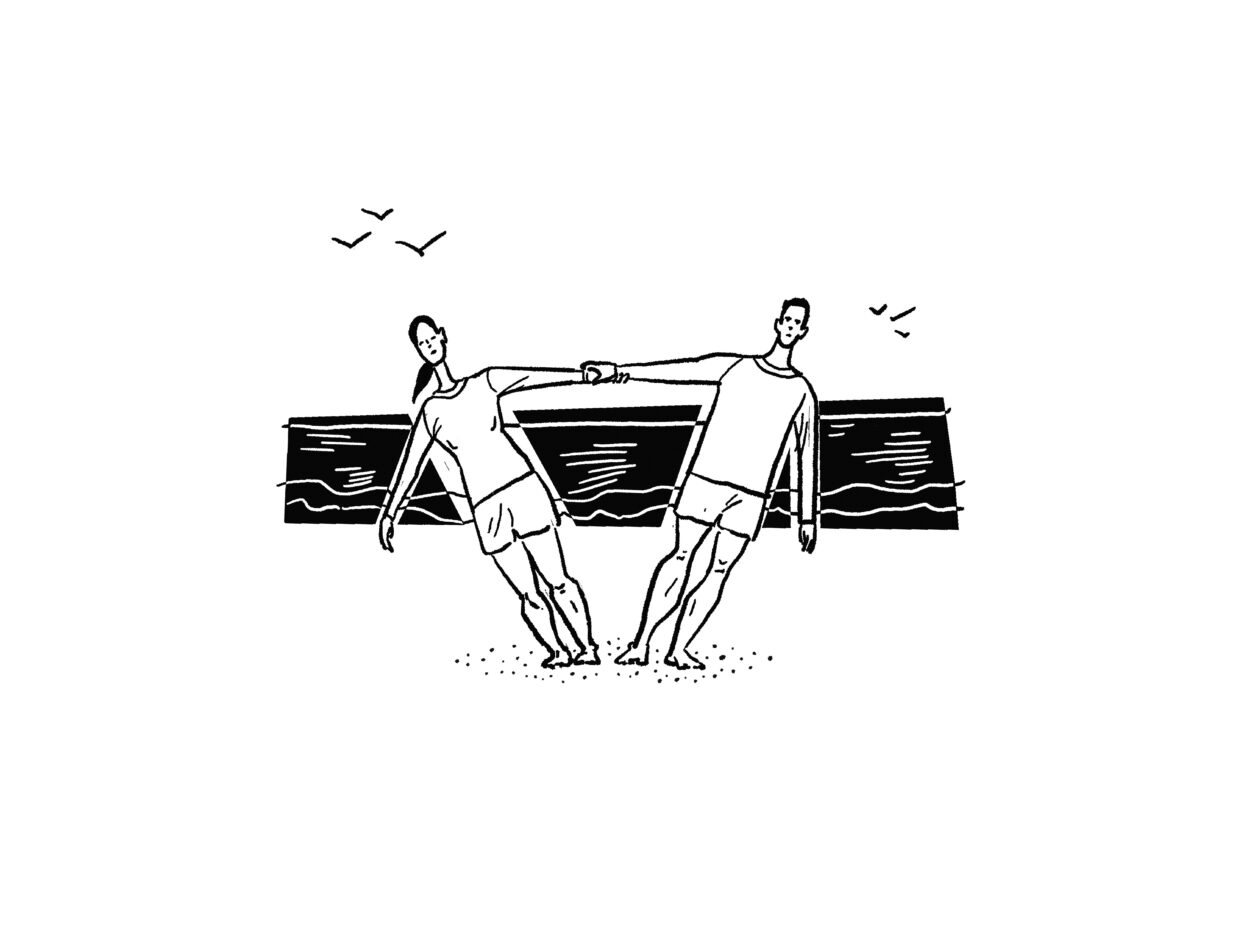
Image by Ivy Sanders Schneider

Image by Ivy Sanders Schneider
When dancers refer to the avant-garde, they tend, counterintuitively, to mean something old: experimental artists in the 1960s and 1970s in New York, who worked largely out of lofts and Judson Memorial Church. Modern dance, by that point, had moved beyond ballet’s pointe shoes, tilted heads, and sweet violins, but the avant-gardists went further. Yvonne Rainer wrote a manifesto in 1965 that rejected spectacle and virtuosity. Trisha Brown strung unremarkable motions together into what she called “accumulations.” A lot of the work, like Lucinda Childs’s “Dance,” a mesmerizing collaboration with Philip Glass and Sol LeWitt, was slouchy, cool, and organic. It didn’t express emotion or match its music, and no one smiled.
Avant-garde dance had gone so far past ballet that it may have seemed it could go no further. But then it aged into the establishment. When “Dance” was restaged at the Joyce Theater in 2021, the performers were so virtuosic that they strained to recreate Childs’s nonchalance, and a show of Trisha Brown’s works on Rockaway Beach last summer, against sparkling blue water, could hardly be seen through the crowd. Choreography invented a half century ago — thrown limbs that propel the body, controlled movements that break into swinging, relaxed ones — is now vernacular.
Even as it borrows from the past, today’s dance has found new rules to break. The movement leans messier, louder, and more feral. Maybe the biggest change is that, while the avant-garde let dancers walk casually on stage, contemporary work has them talking, too. A piece by Moriah Evans at Performance Space New York this winter showed dancers interviewing one another. In Miguel Gutierrez’s “I as another,” at Baryshnikov Arts Center this spring, the choreographer and another performer described their childhood homes and mused aloud about honesty. Speech has given dance new dimension; it can also be annoying. The Trisha Brown Dance Company recently premiered work by a former company member in which the dancers dramatically shouted nonsensical lines like: “I want to see the room!”
Lisa Fagan, a friend of mine whose own work has incorporated speech, told me that she’s become a little sad about the trend of “tucking” dance under other things. For an upcoming work with Lena Engelstein, called “Deepe Darknesse,” which will be shown in June at a space called the Collapsable Hole, Lisa told me she was excited about “returning to dance and asking it to be the experimental, avant-garde thing.” She and Engelstein plan to say nothing during the first twenty minutes. Their choreography, which I saw at a recent rehearsal at the dance center Movement Research, isn’t rigid in its acceptance or refusal of genres; it threads postmodern cool with cabaret-like showiness.
This is all to say that experimental dance is still being made and performed — sometimes on well-funded stages, more often on ones you likely haven’t heard of — because there is always something new to do and something old to push against. Whether any of this work is “avant-garde” will be decided later. By the time it deserves that label, it may have been mummified into the mainstream. We should enjoy it now, while it’s still weird.
Liza Batkin is a writer and appellate public defender in New York.